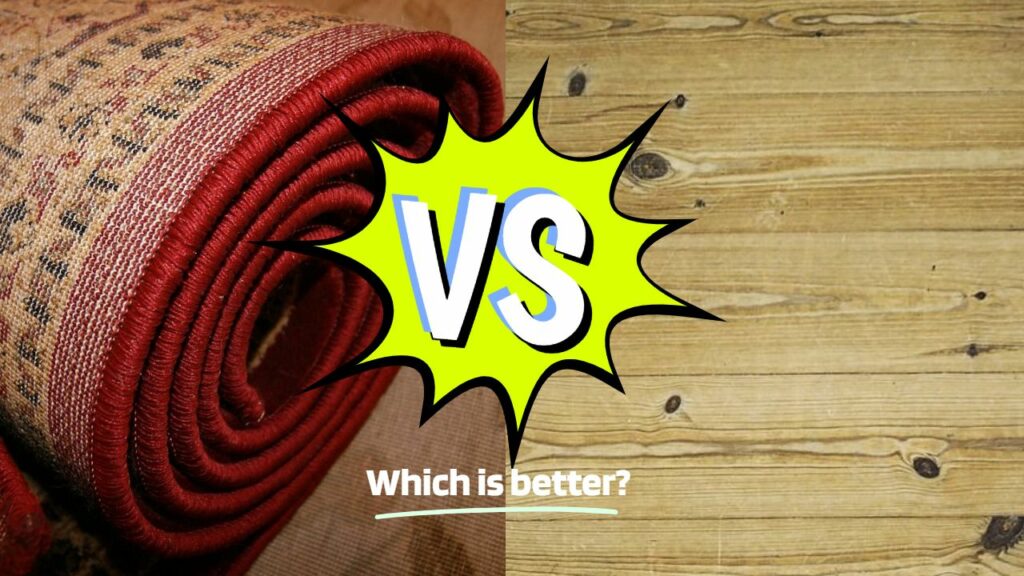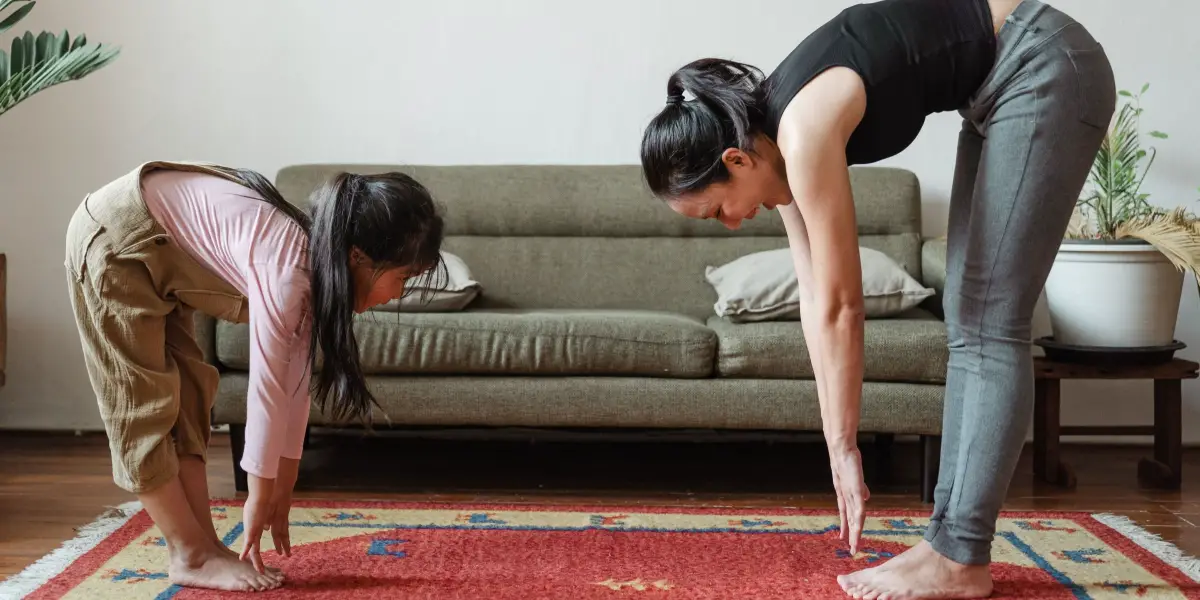If you’re just getting started with Pilates you are likely wondering how much do you need to spend on equipment before you can try this out. At minimum, you’re likely considering if you need to invest in a Pilates mat or if your carpet will be good enough.
It is possible to do Pilates on a carpeted floor however a mat is always recommended to give proper support to your joints and prevent accidental falling and injuries due to worn carpets or unsecured rugs.
Mats are a low cost investment, if you’re planning on regular workout, be it Pilates or Yoga, I’d advise getting one, however if you’re at the start of your journey and you’re looking to try Pilates at home at no cost I’d suggest doing a free YouTube tutorial on your bare floor first.
Can you do Pilates without a mat?
Yes you can practice Pilates without a mat, the brilliant thing about this form of exercise is it doesn’t require anything other than your body, some space and a flat surface. You don’t need weights, equipment or a studio, you can do it in your living room, bedroom, garden or even at the beach.
If trying a workout you might want to consider laying down a towel over the carpet to protect it from getting dirty and prevent you from getting carpet fibres on your skin, this won’t provide you with the same level of support (unless you happened to have very thick towels!).
Carpet vs Hard Floor
As many homes now have a mixture of floor surface types you might no be asking can you do Pilates on a carpet, instead you might be wondering if you can do it on a hard floor, if you’re not going to use a mat there are pros and cons to consider for both.

Carpet Pros
- Provides more cushioning for your joints
- More challenging than a mat so can improve your overall balance
Hard Floor Pros
- Not slippy (when bare foot/using grip socks)
- Easy to clean up post workout
- Little movement as weight shifts
Carpet Cons
- Can drip sweat into your carpet
- Friction between the body and carpet can cause a rash
- Can be harder to balance as carpet moves under weight
- Carpet will be damaged in time
- Potential for friction burns if you slip
Hard Floor Cons
- Uncomfortable, e.g. when lying on back
- Can damage joint on hard surface
- May damage floor in time
- Can become slippy if you become sweaty
In addition to the cons above, research has shown that an estimated 37,991 people a year aged 65+ have falls associate with carpets (54.2%) and rugs (45.8%).
The key to doing Pilates on carpet is to avoid slipping and sliding by using a mat or carpet with a good gripping surface.
There are other types of flooring, these tend fall someone between carpet and hard floors and therefore suffer a mixture of these pros and cons.
Given these issues you can see why many people invest in a mat! Using one offers advantages, for example it gives you a consistent work area no matter the floor type and can make the floor safer, especially important for body weight exercises that require your feet to stay still and not slip and slide about.
A key reason to avoid working out directly on a floor is that it can be very uncomfortable for some moves, for example you may not enjoy moves involving being on your back if you have a hard surface to lie on. Keep that in mind as it would be a shame for you to try something new out and decide you don’t like it because you felt uncomfortable on the floor.
If you try it on carpet and decide you want to buy a mat here are some key considerations:
- Is it easy to store? When you’re done with the class you won’t want to leave the exercise mat out, you’ll want to roll it up and store it away for future use.
- Is it easy to transport? If you plan on taking the mat to classes does it have handles or a carry case for easy carrying.
- How thick is it? Most Pilates mats are over 6 mm in thickness to provide good support and comfort, with some as thick as 15 mm. Don’t go thinner than 6 mm as this won’t provide the support required.
- Is it the correct size? Mats come in a range of sizes, be sure to get one that allows you to comfortably lie on your back or front without your head/feet hanging over the end.
- Is it a textured mat? If your interested in both Yoga and Pilates it can be beneficial to invest in a grippy surface that will ensure you don’t slide off the mat regardless of the position you’re attempting.
With that in mind my personal recommendation is the “SISSEL Pilates & Yoga Mat”: https://www.sisseluk.com/pilates-yoga-mat-by-sissel
It is made from PVC with a fabric border, has a wipe clean surface and offers a high quality, skid-proof, surface. At 6 mm deep it provides great support and the burgundy colour looks great.
If you’re unable to purchase that particular mat keep the above in mind when picking a mat and you won’t go wrong.
Pilates mat vs Yoga mat
Although similar in appearance, the primary difference between the mat types is Pilates mats are thicker than yoga mats in order to provide the support required for your back and tailbone. A standard Yoga mat is around 3 mm, a thick mat would be 5 mm thick, to give you a better connection to the floor. Most Pilates mats are over 6 mm thick.
Yoga mats are thinner to provide a non-slip surface you can balance on, although they do come in thicker versions to provide extra cushioning for those with joint issues.
At twice the thickness, Pilates mats provides better support for your spine, wrists, knees and back during a workout and are far more comfortable in use when the moves involve being on your back or stomach.
So Can you do Pilates on carpet?
Hopefully you understand why we use mats, yes you can do a routine without one, be it on carpet, hard floor or even outside, but you will be missing out on the benefits of using a mat. If you’ve never done Pilates before and don’t want to spend any money at this stage give it a try without a mat, just keep in mind you will likely enjoy it more and be more comfortable with one to support you.




